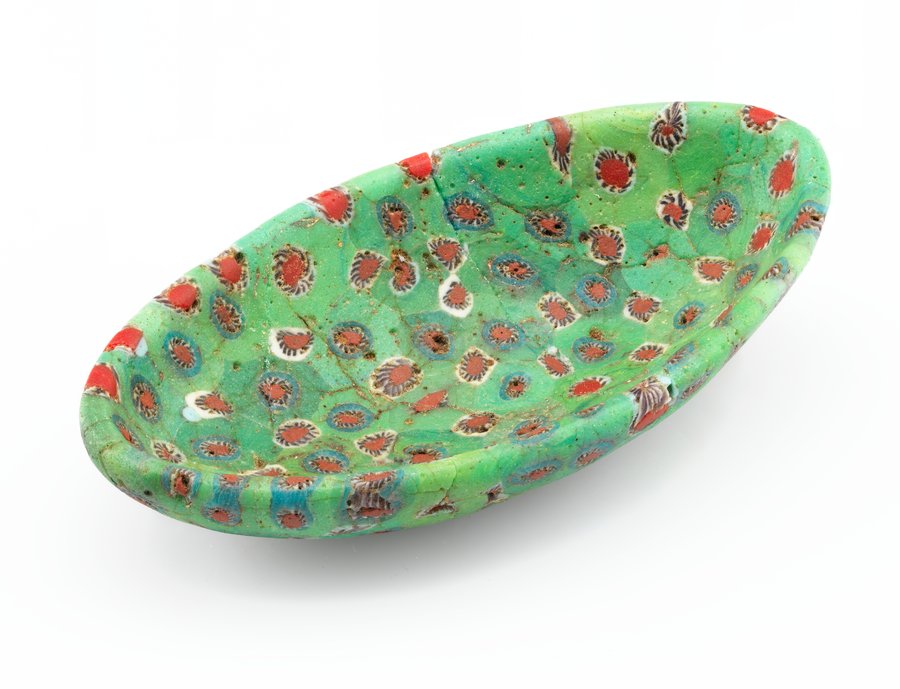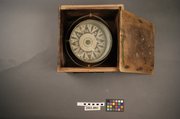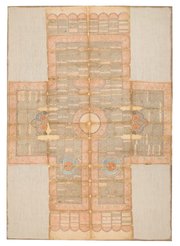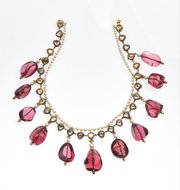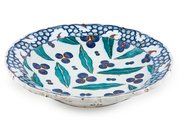
Mosaic Glass Bowl or Boss
Museum of Islamic Art
- Title:
- Mosaic Glass Bowl or Boss
- Production place:
- Iraq
- Date:
- 800 - 999
- Period:
- Abbasid
- Title:
- Mosaic Glass Bowl or Boss
- Production place:
- Iraq
- Date:
- 800 - 999
- Period:
- Abbasid
- Material:
- Glass
- Technique:
- Mosaic, Fusing, Slumping, Ground, Polishing
- Dimensions:
- 2.2 × 8.9 × 4.7 cm
The discovery of fragments of mosaic or millefiori glass and tiles in the ruins of Jawsaq al-Khaqani, the Abbasid palace built by Caliph al -Mu’tasim in 221-28 AH / 836-42 CE at Samarra, confirms the production of glass objects using this Antique technique, revived in the 3th century AH/ 9th century CE. In this technique, various coloured glass rods were fused together to form larger units, which were cut into smaller roundels. These pieces were then placed in a mould in order to be melted together. The result of this technique shows a colourful pattern, reminiscent of a thousand flowers, as the word millefiori illustrates. This laborious technique was popular during the early Abbasid period initiating the manufacture of objects such as gaming pieces, shallow dishes, bowls, tiles and perfume or cosmetic containers. This example, made of green and red roundels, is reminiscent of similar miniature vessels created during the Roman period. However, the absence of a foot may suggest that such small pieces were embossed as part of architectural decorations.
